by Jessica Romano
As the seasons change from winter to spring here in western Pennsylvania, a common sight on a recent walk included fallen and decomposing trees. Interesting to look at and begging to be photographed, these fallen trees also hold a very important role in the ecosystem.
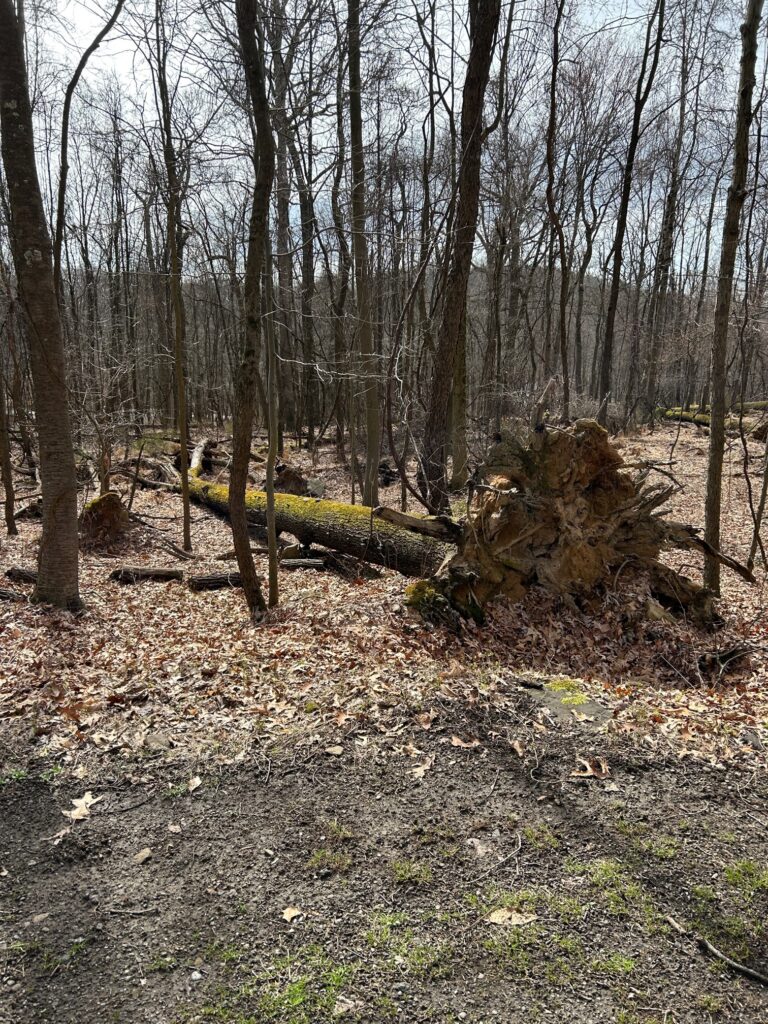
Dead and fallen trees are host to many forms of wildlife, some of which are easy to spot, like squirrels, woodpeckers, and snakes, while others may require a closer look to identify, including fungi, insects, and salamanders. These organisms use the trees for food and shelter, and as the tree decomposes further, the nutrients absorb into the soil and set up favorable conditions for new growth. This cycle is crucial to the health of forests – in fact, numerous species rely on this process to thrive. According to the National Wildlife Federation, “Dead trees provide vital habitat for more than 1,000 species of wildlife nationwide. They also count as cover and places for wildlife to raise young in the requirements for Certified Wildlife Habitat designation.”
Dead trees are identified two ways:
Snag – a dead tree that is still standing upright while decomposing
Log – the part of a snag that has fallen or partially fallen to the ground
Snags and logs each contribute to a thriving ecosystem in different ways. Snags can have cavities that house mammals, birds, and insects, and can be used for storage or look-out points. Logs on the ground can also act as hiding spots and nests, and as they decompose they provide the nutrients that recycle back into the soil. For those curious for more details about which species in PA utilize snags and logs, Penn State Extension has a thorough list.
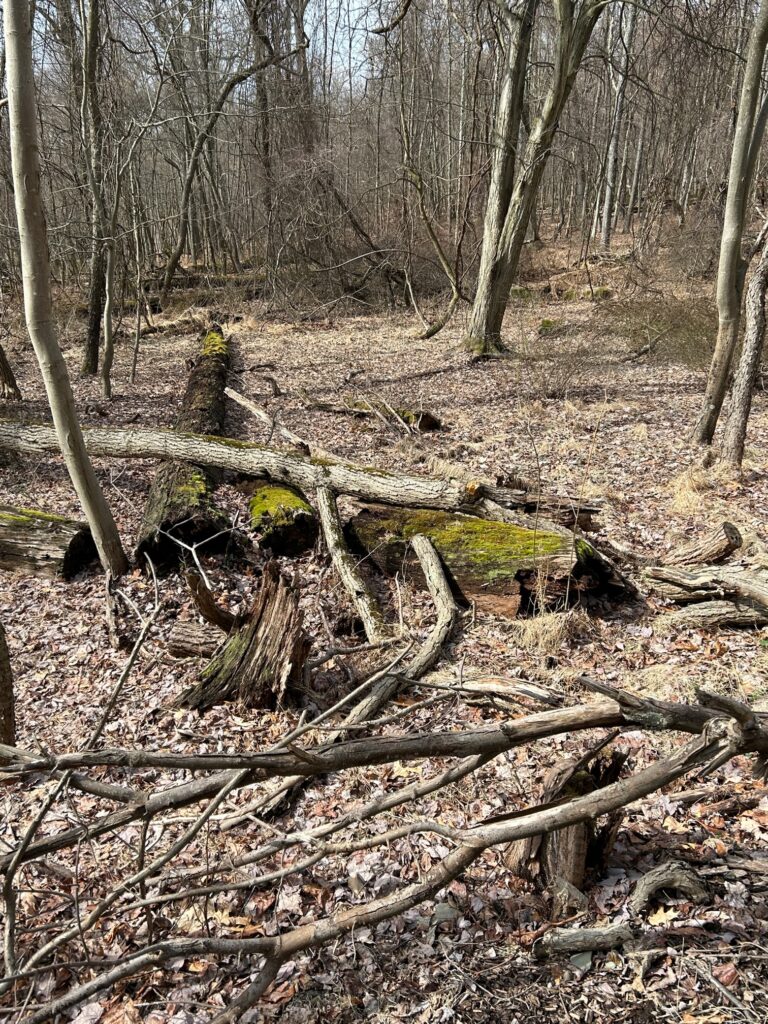
The photos used here were taken at Hartwood Acres, one of the Allegheny County Parks located in Hampton Township, north of Pittsburgh. Some trees appeared to be freshly uprooted, with the circumference of the base of the tree standing several feet high, while others had clearly been decomposing for quite some time, with the trunk completely hollowed out.
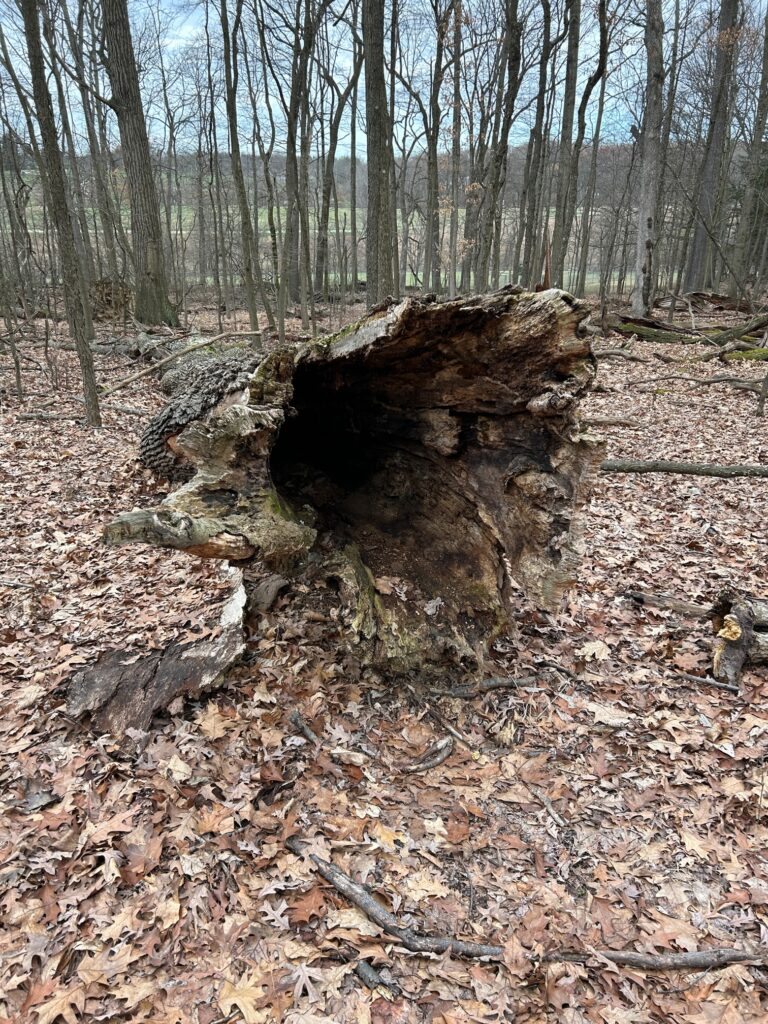
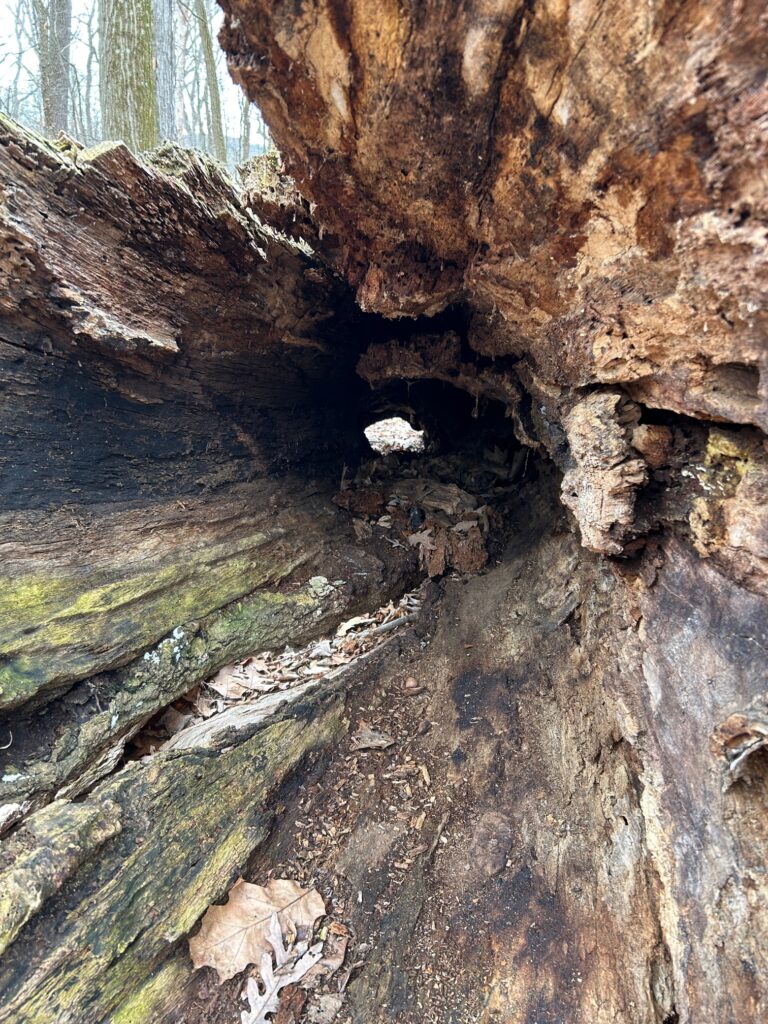
When a tree is uprooted from some type of disturbance event like a storm, it makes space for another topographical feature, pits and mounds. A pit forms in the space where the roots and soil are pulled up. Over time, the root mass decays and falls to the ground, creating a mound on the surface. This is called a micro-topographical feature because it forms around the base of a single tree. Pit-and-mound features create new habitats for wildlife and can often be used as breeding grounds for amphibians when water collects in the pit from runoff. The amount and frequency of mounds in forests can give clues to what caused the trees to fall, and even age of the forest as mounds form over extended periods of time.
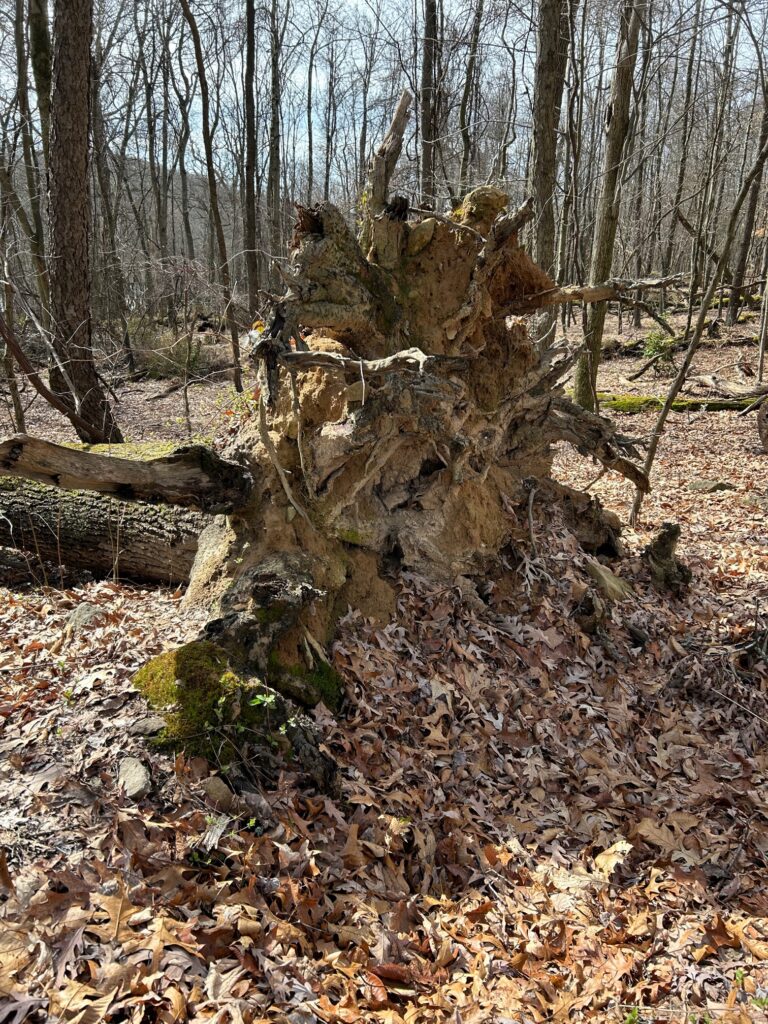
It’s not a coincidence that there are varying types of fallen trees in one park; forest experts monitor these fallen trees and follow guidelines for how many to leave in an area, at times clearing them to help control pests or other safety factors.
Keep in mind it can be dangerous to touch or climb on these fallen trees, especially if they appear rotted. The structure of the wood breaks down slowly but surely and the logs can be weaker than they appear. For that reason it’s better to admire the interesting sight from a distance or at least without touching it. As spring arrives and the tree canopy and forest understory fill in, a return trip will hopefully provide opportunity to spot some of the species benefitting from these fascinating snags and logs.
A perfect opportunity to search for fallen trees and the wildlife that utilizes the newly-created ecosystem is the City Nature Challenge. Using the free app iNaturalist, take and upload photos of nature from April 26 through 29, 2024 and help safely document biodiversity where you live! Learn more about the City Nature Challenge.
Jessica Romano is Museum Education Writer at Carnegie Museum of Natural History.
Sources
Related Content
Using iNaturalist in the City Nature Challenge and Beyond
Teaching About Local Wildlife with the City Nature Challenge
Evidence Counts for Absent Creatures – City Nature Challenge
Carnegie Museum of Natural History Blog Citation Information
Blog author: Romano, JessicaPublication date: April 9, 2024
